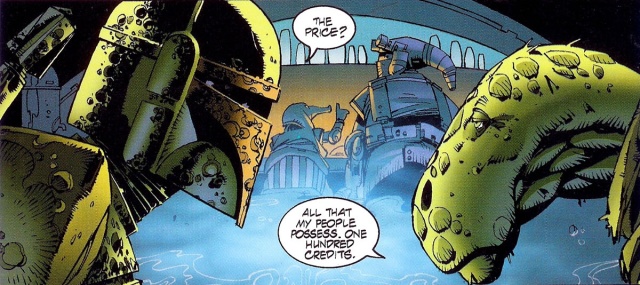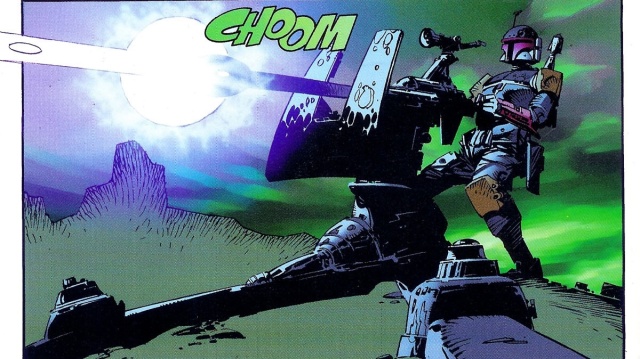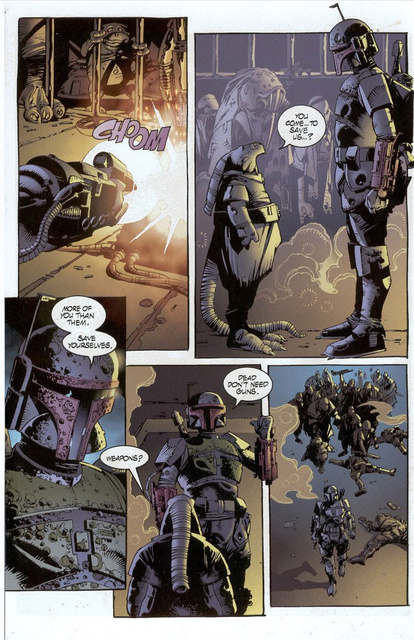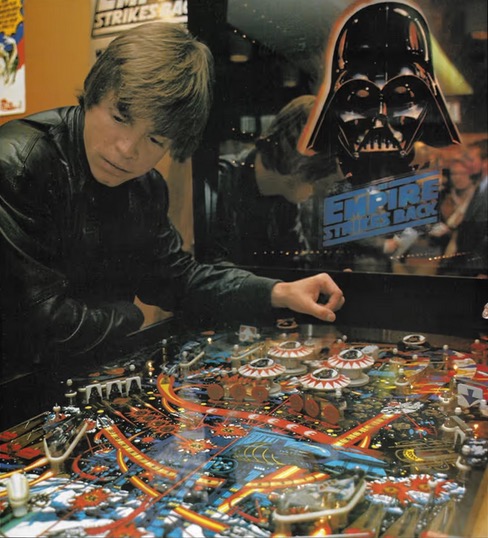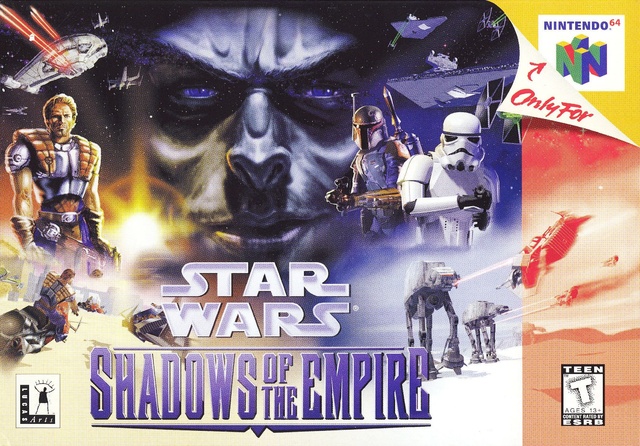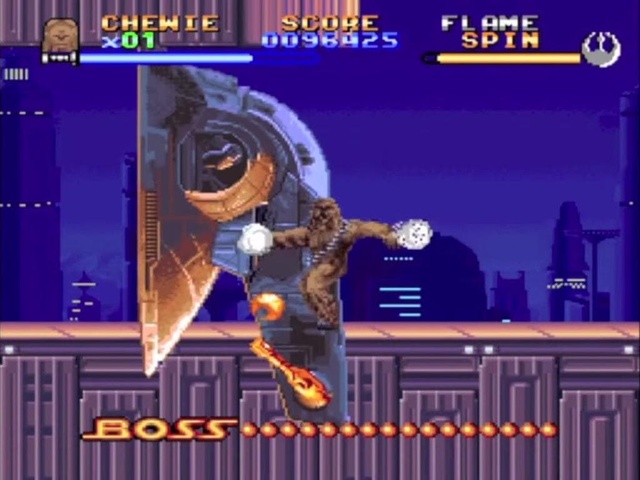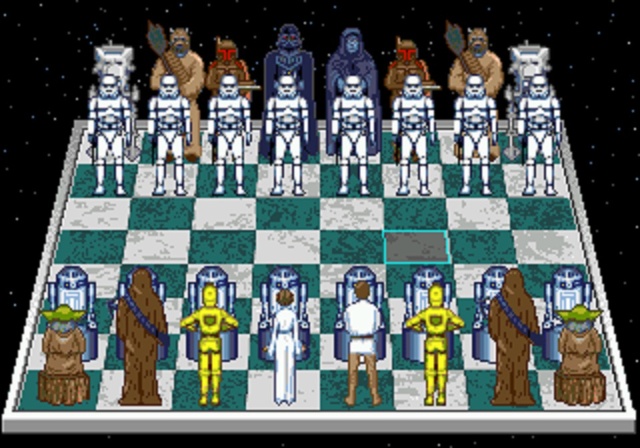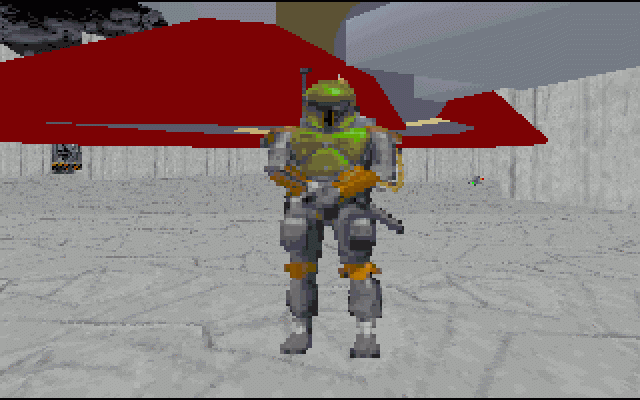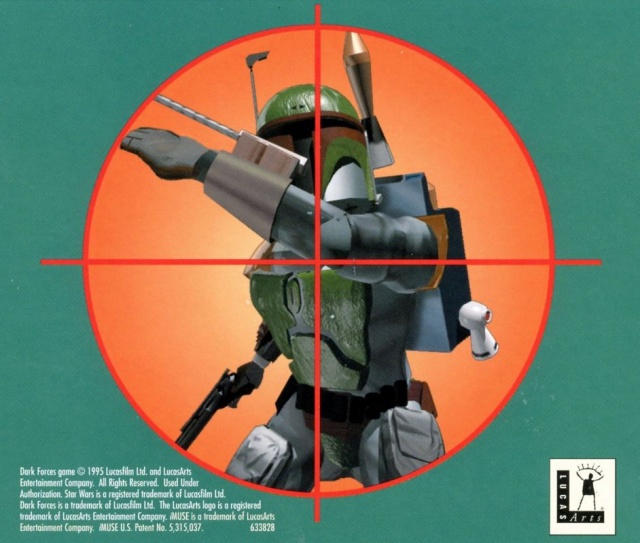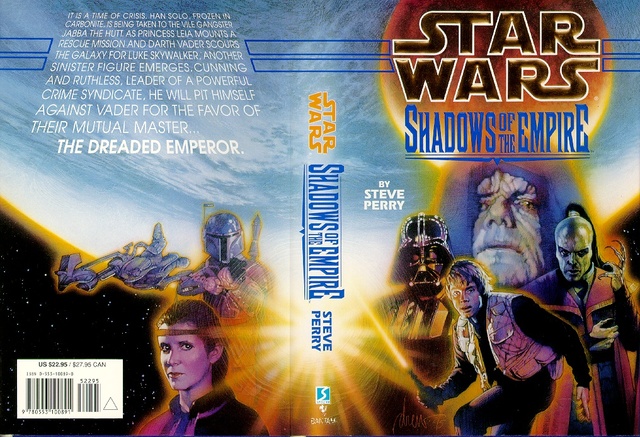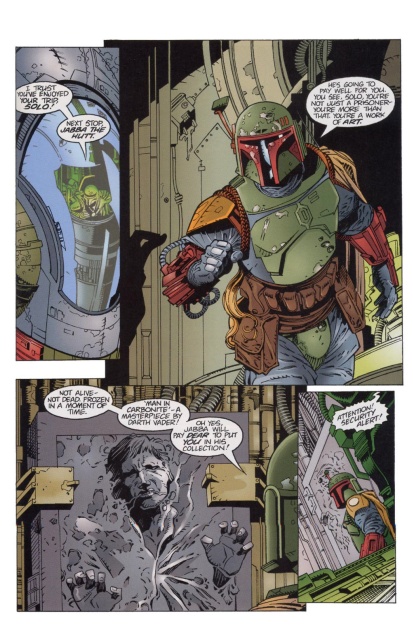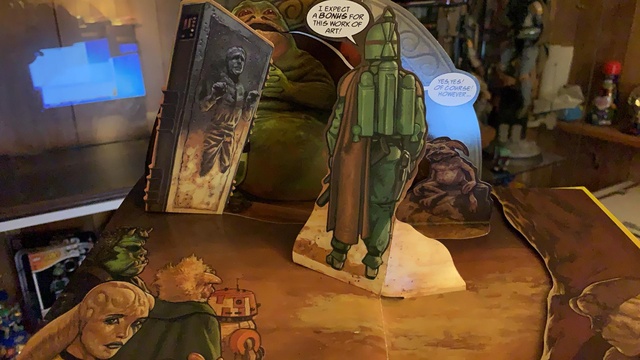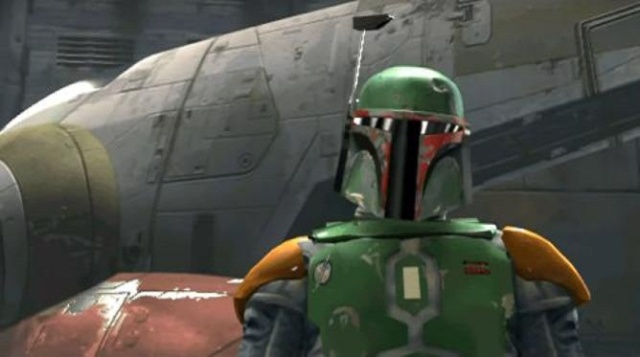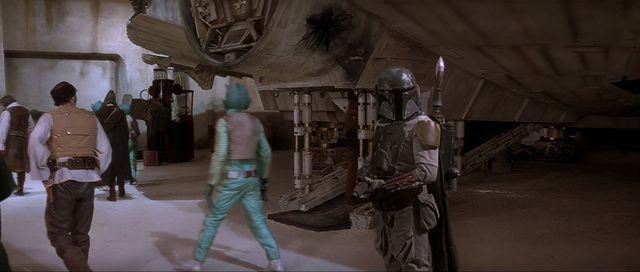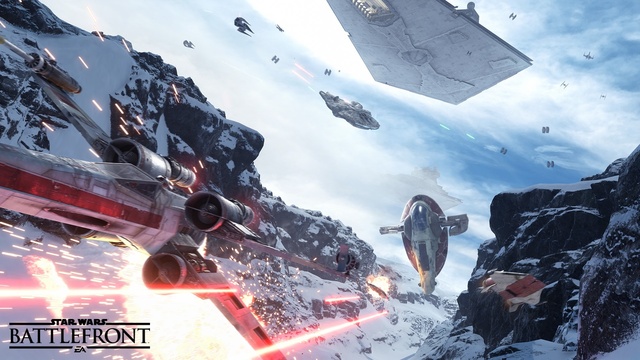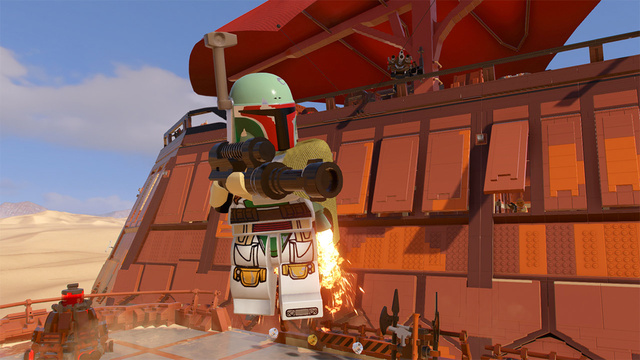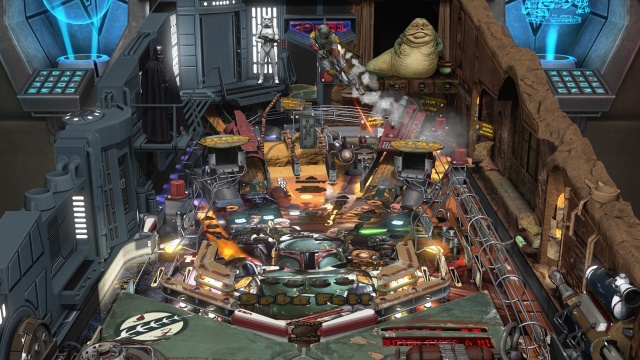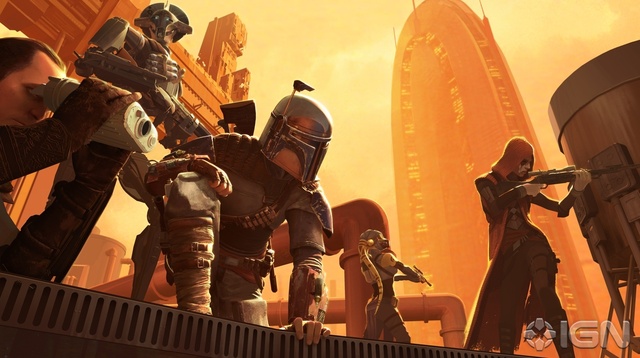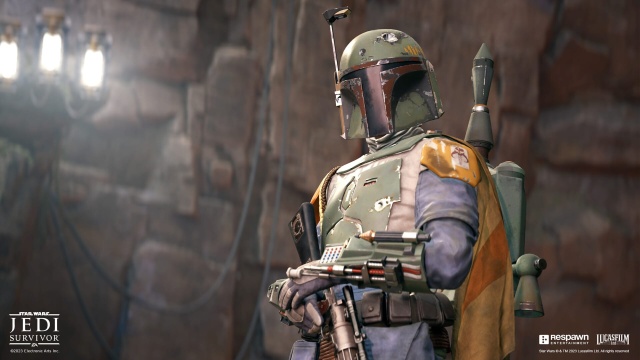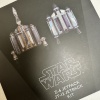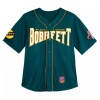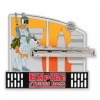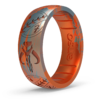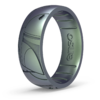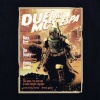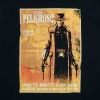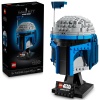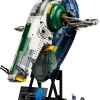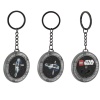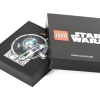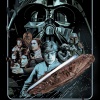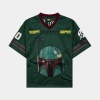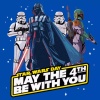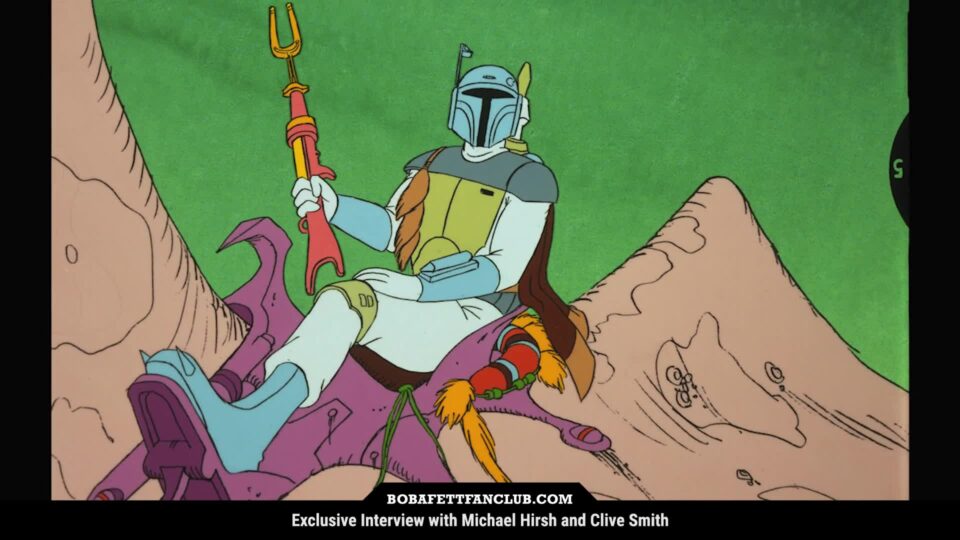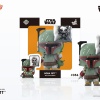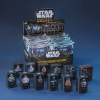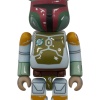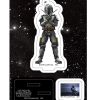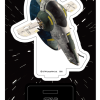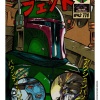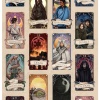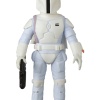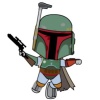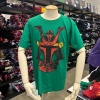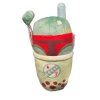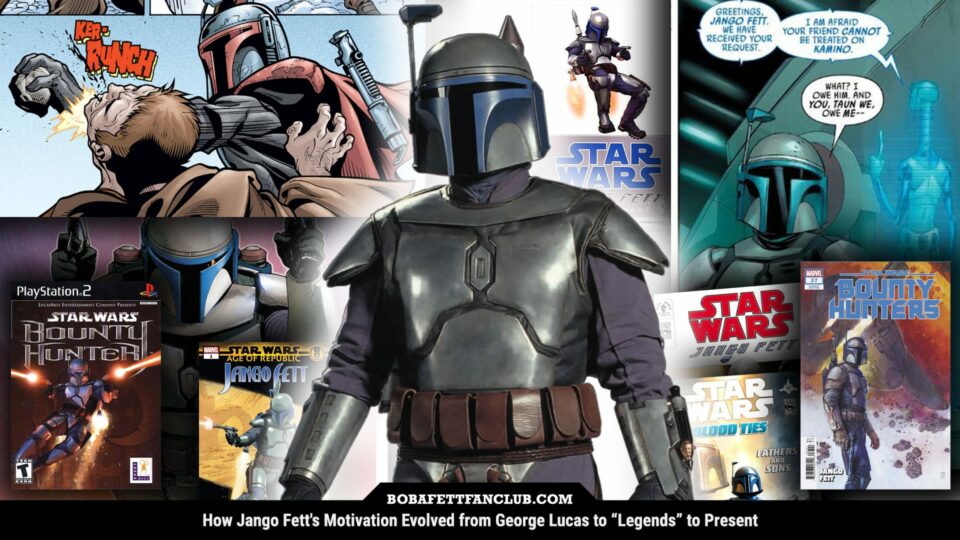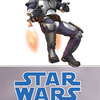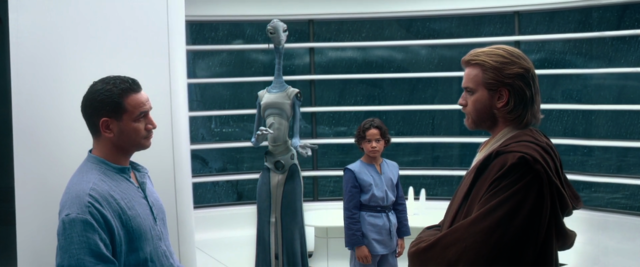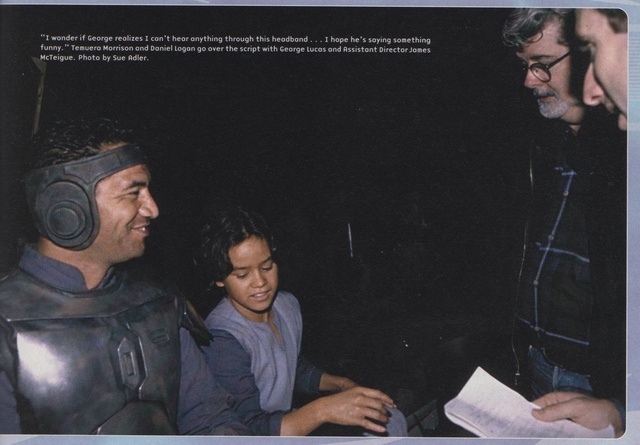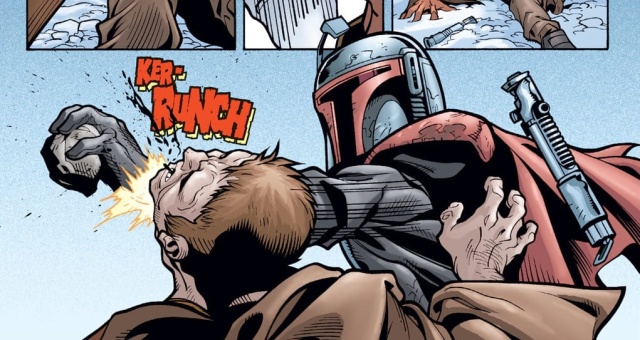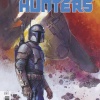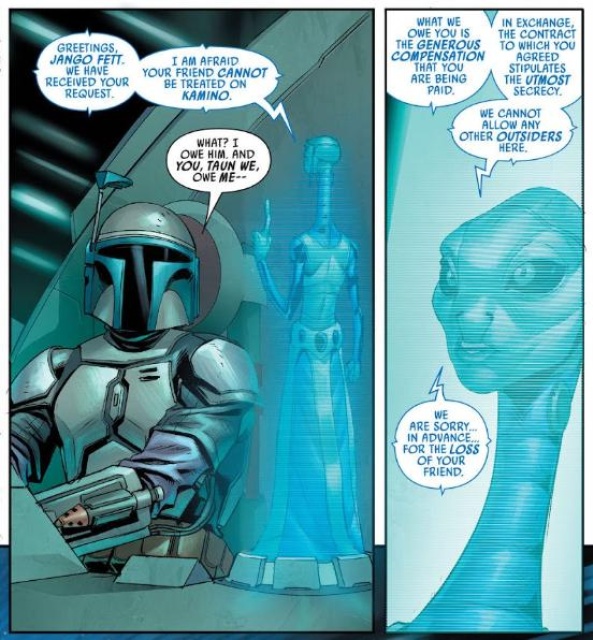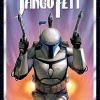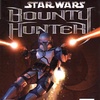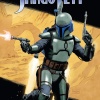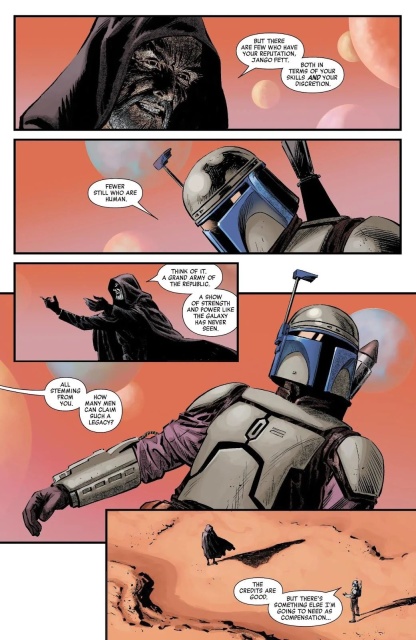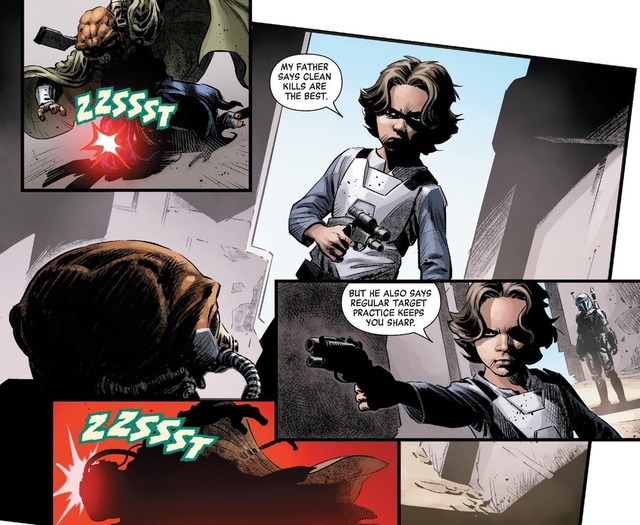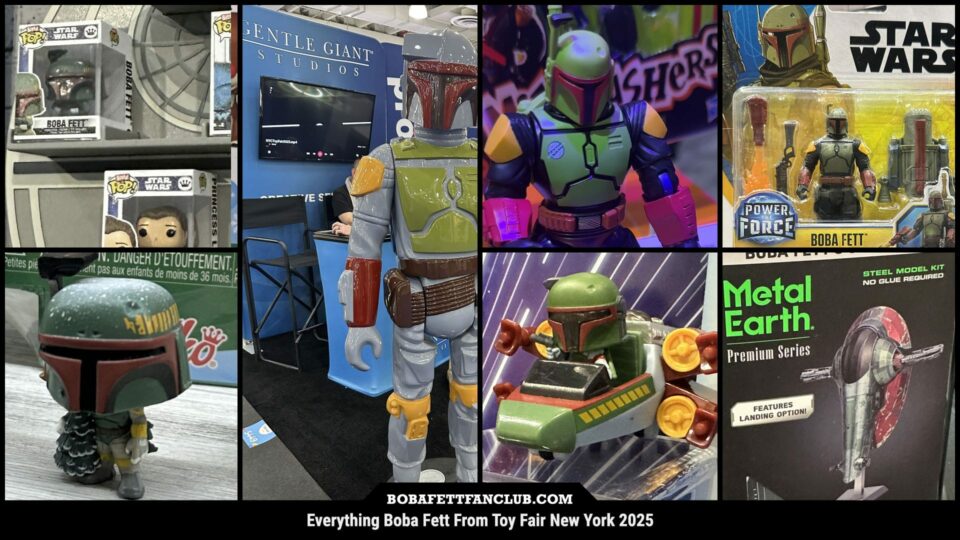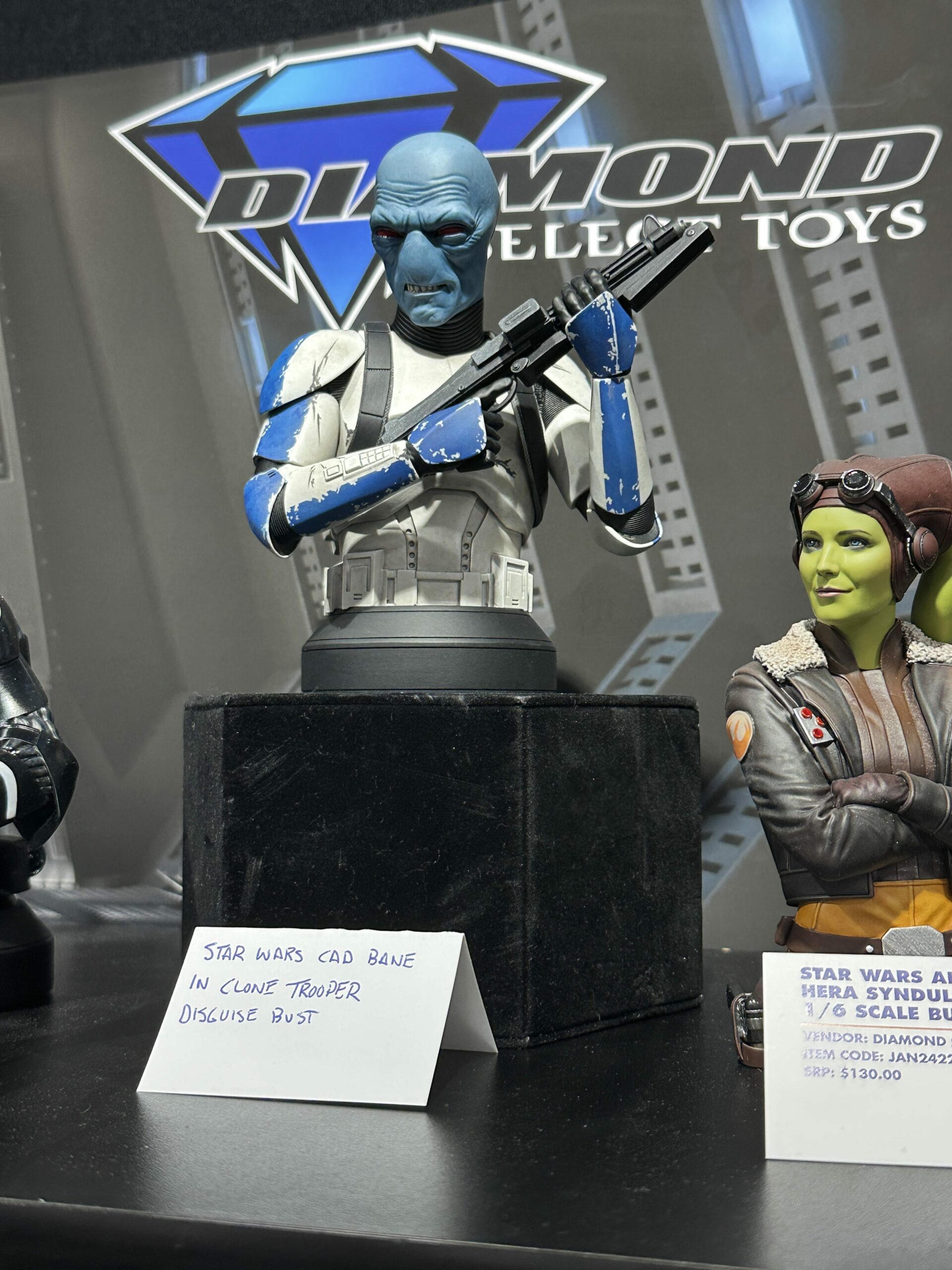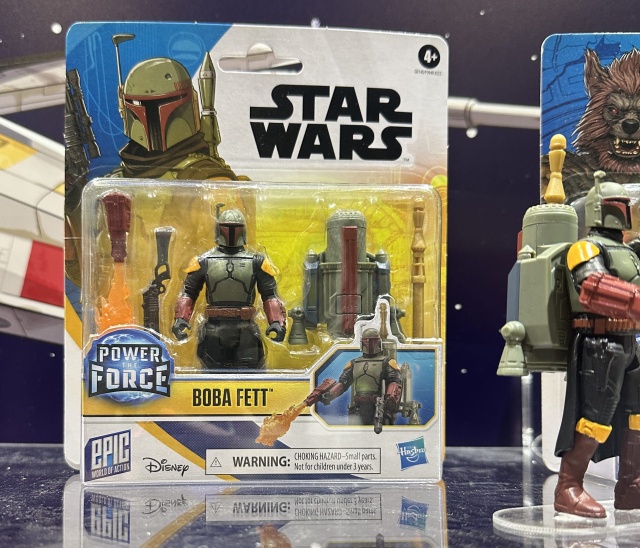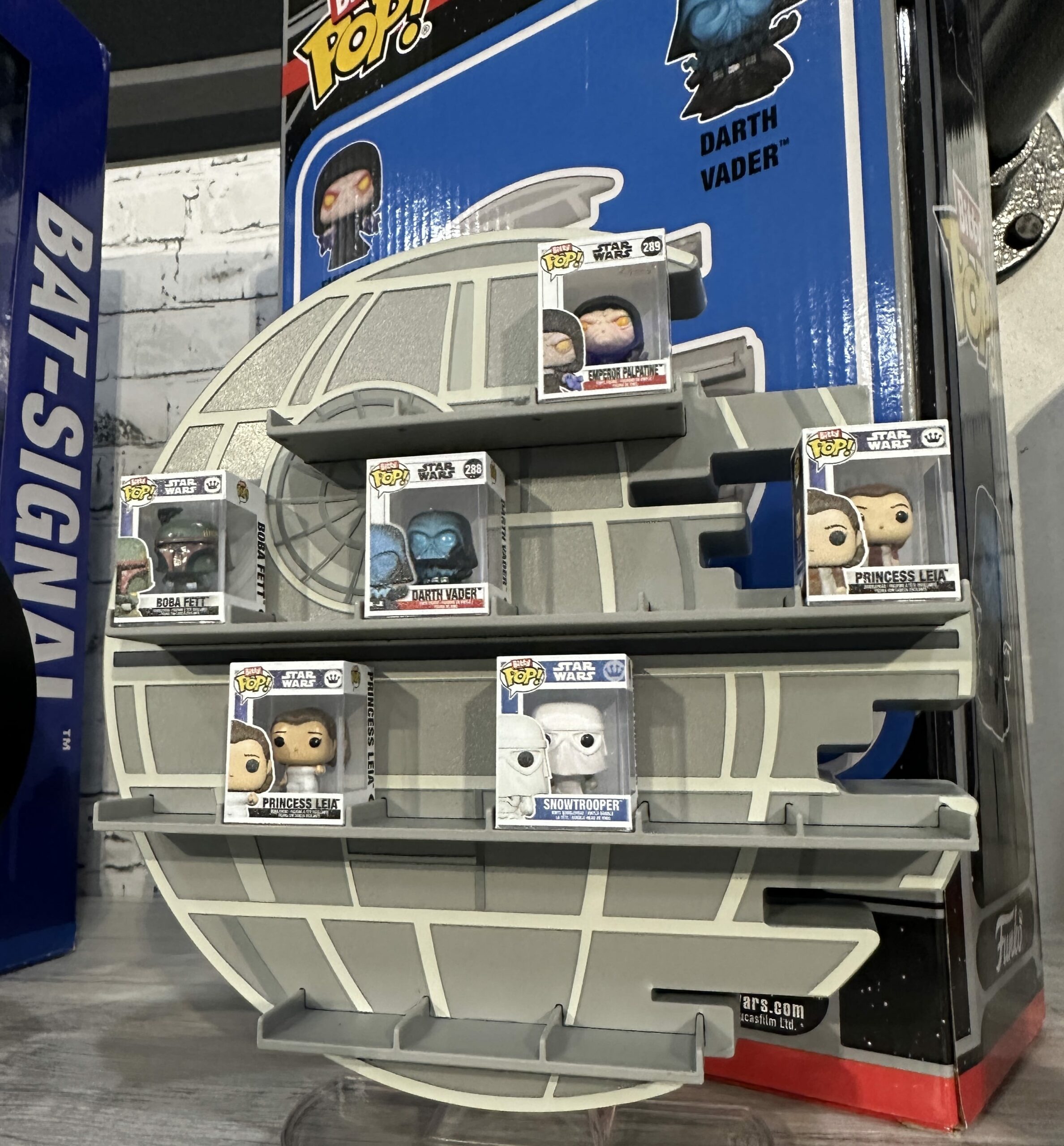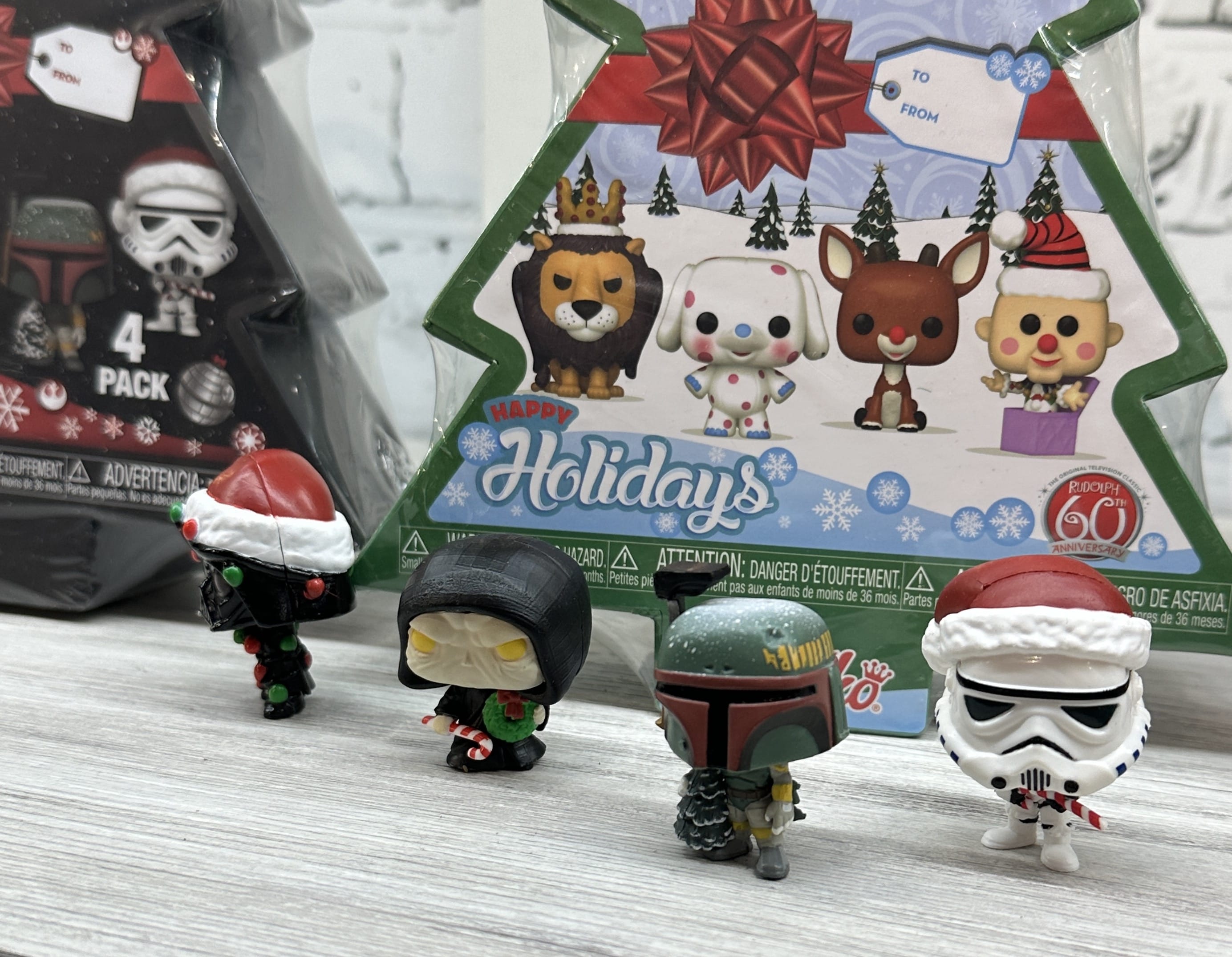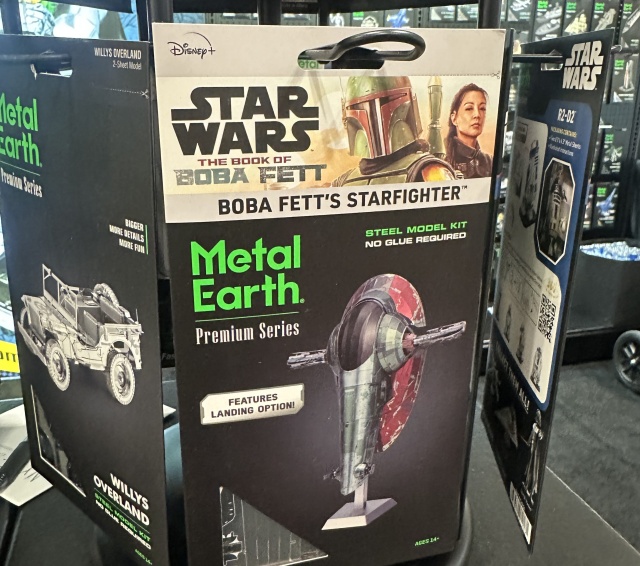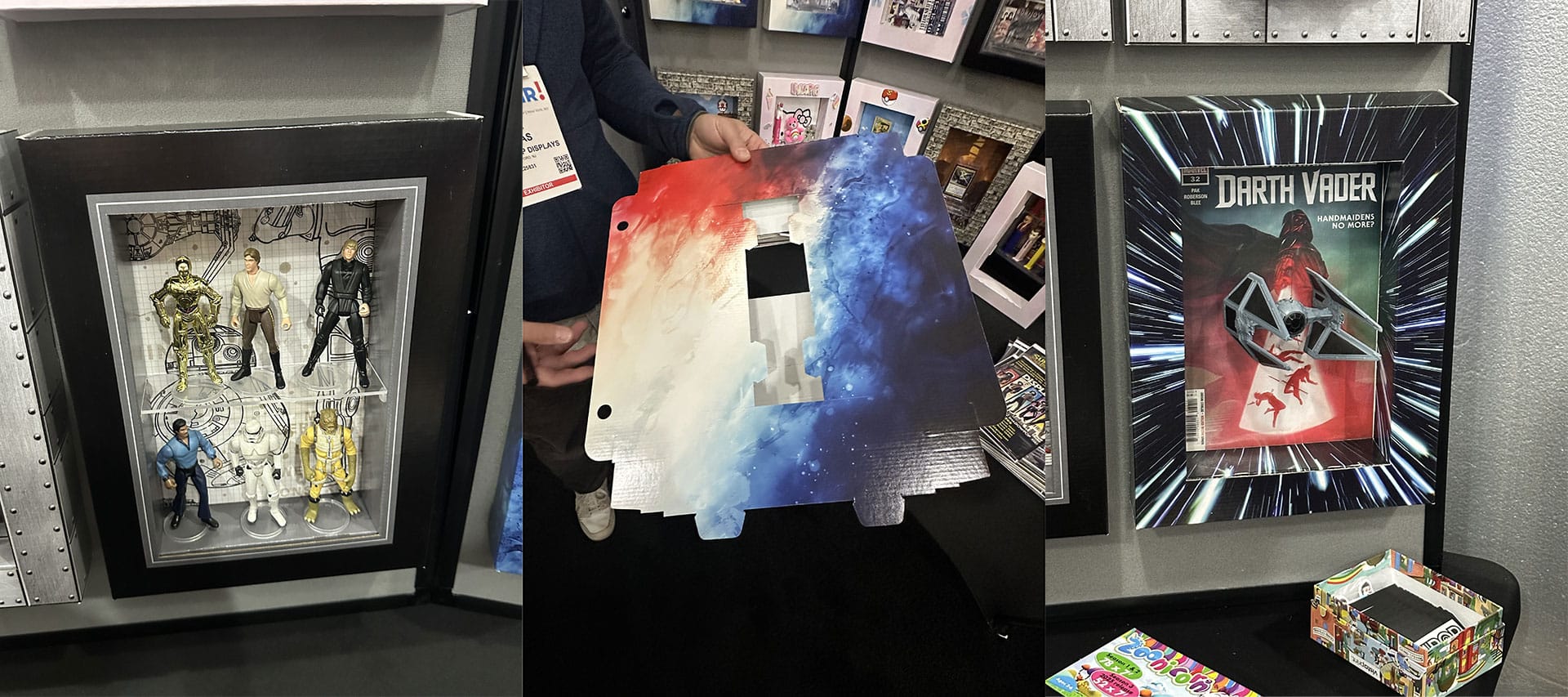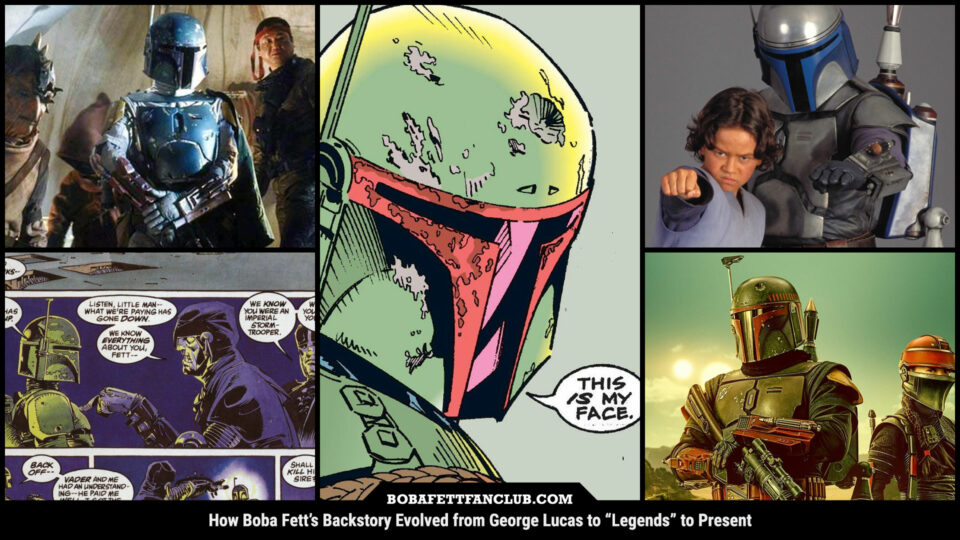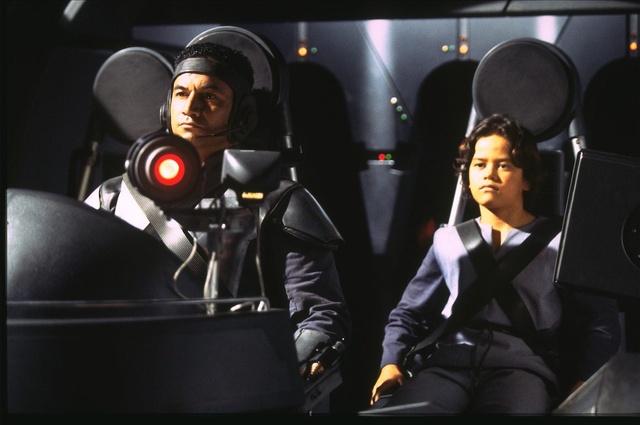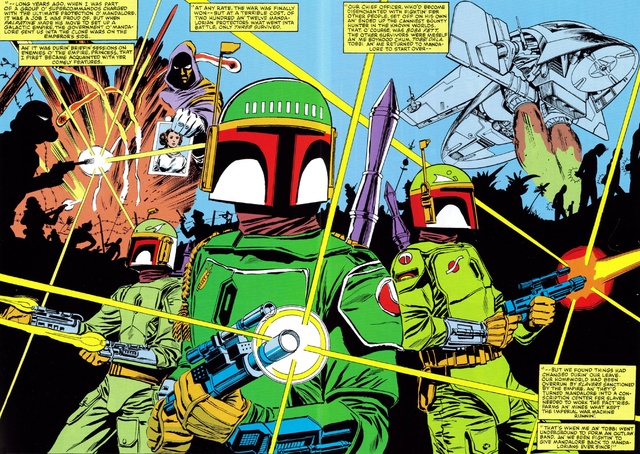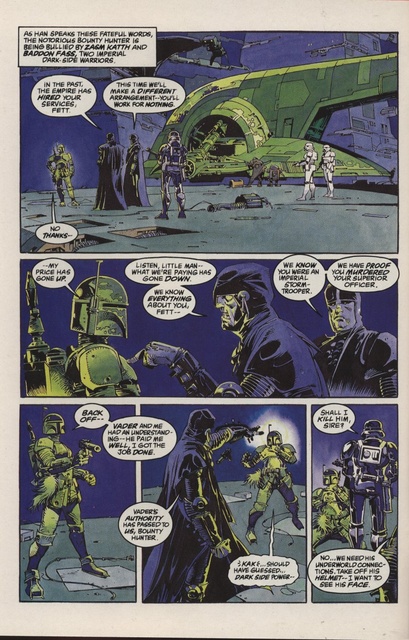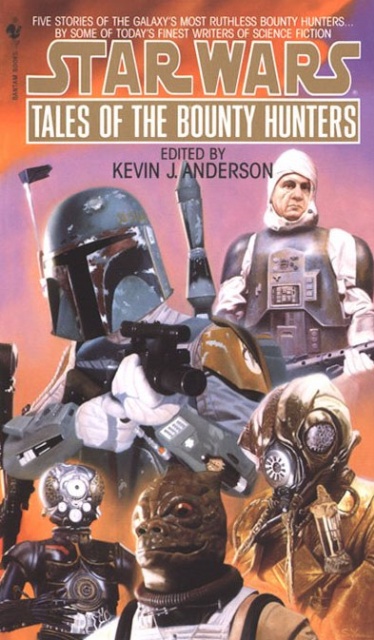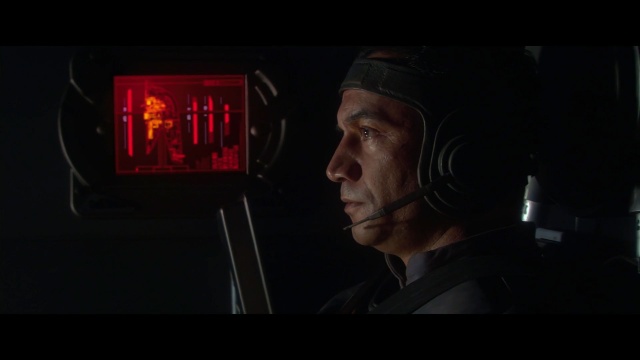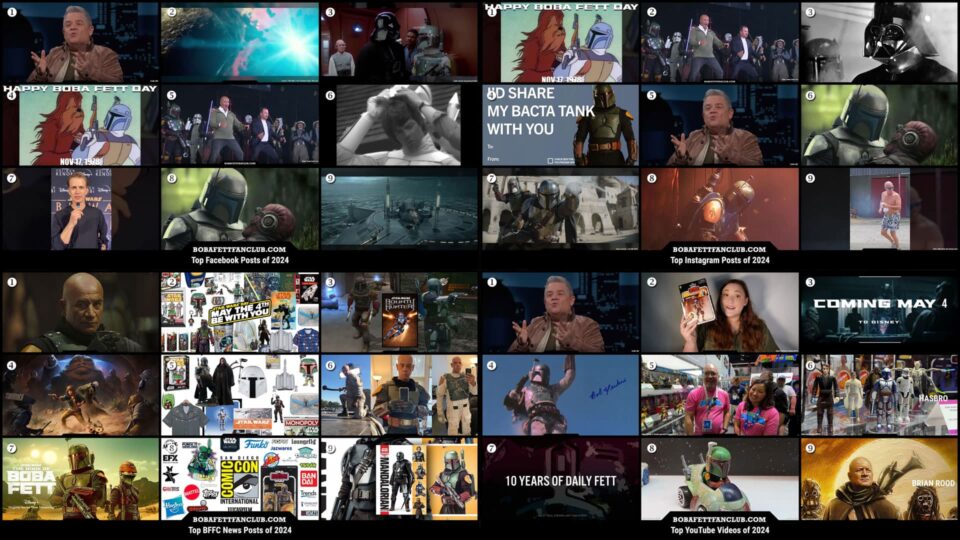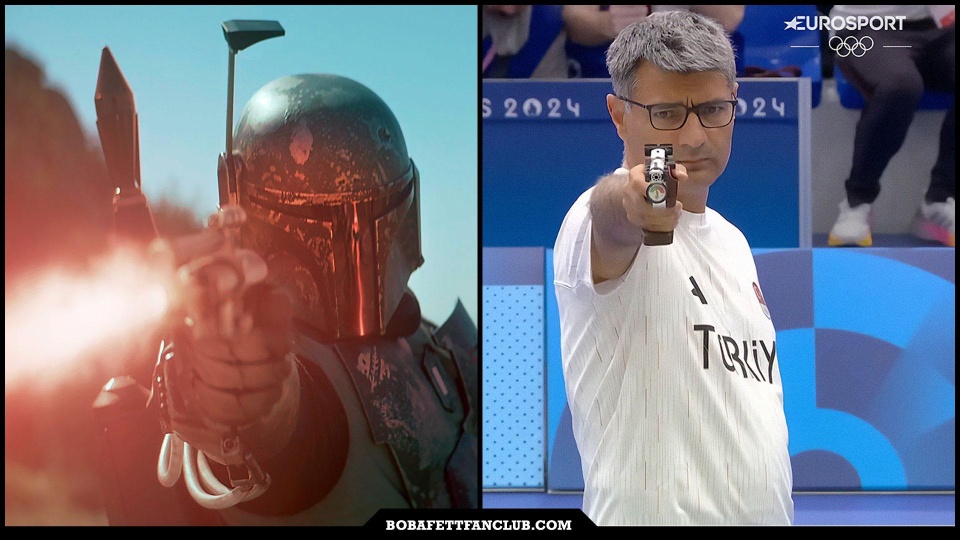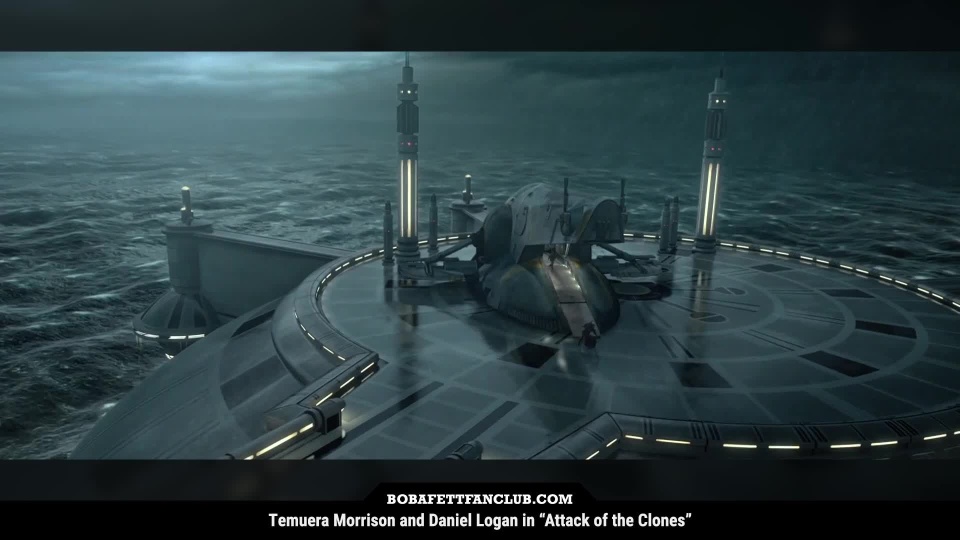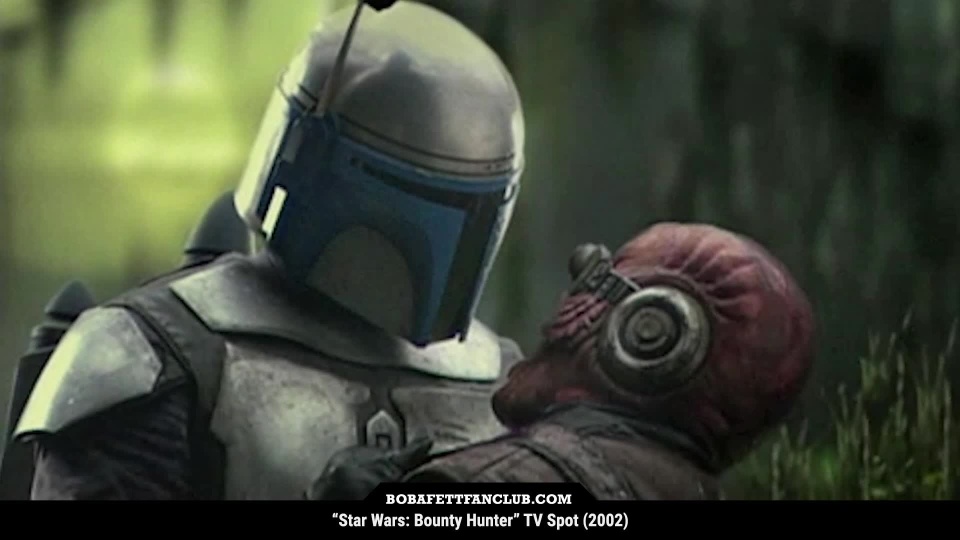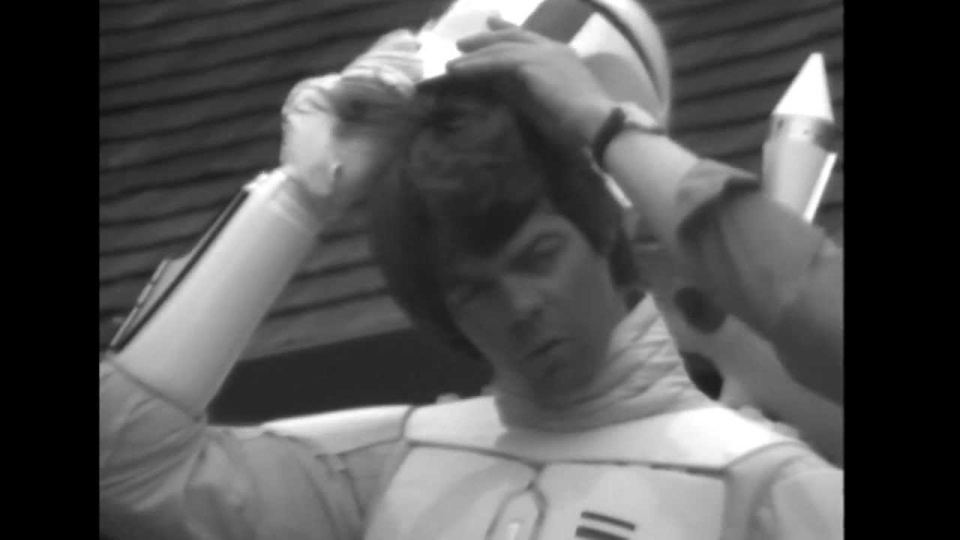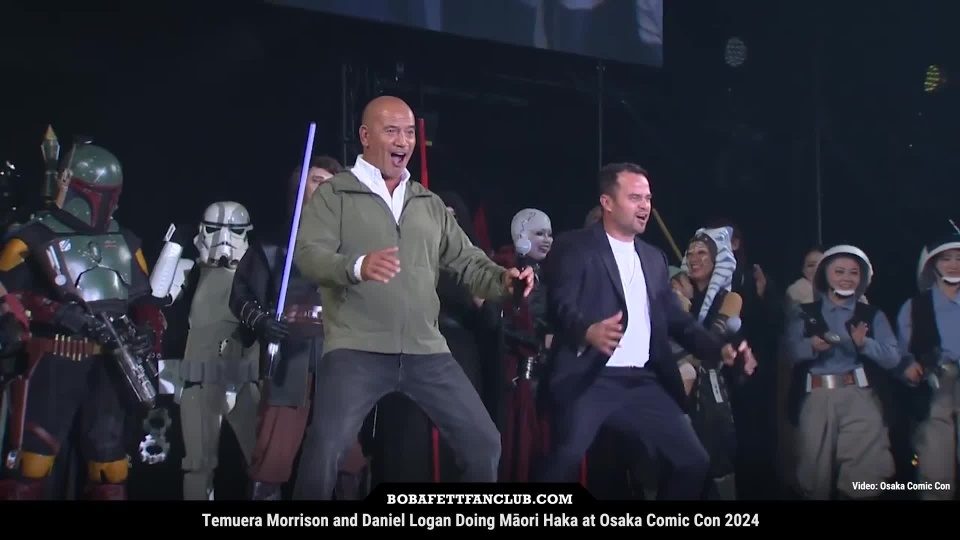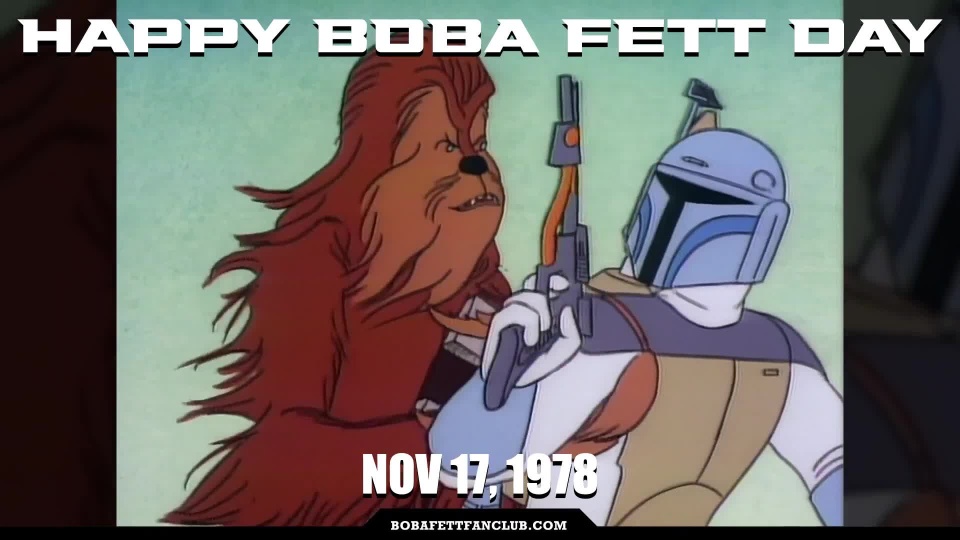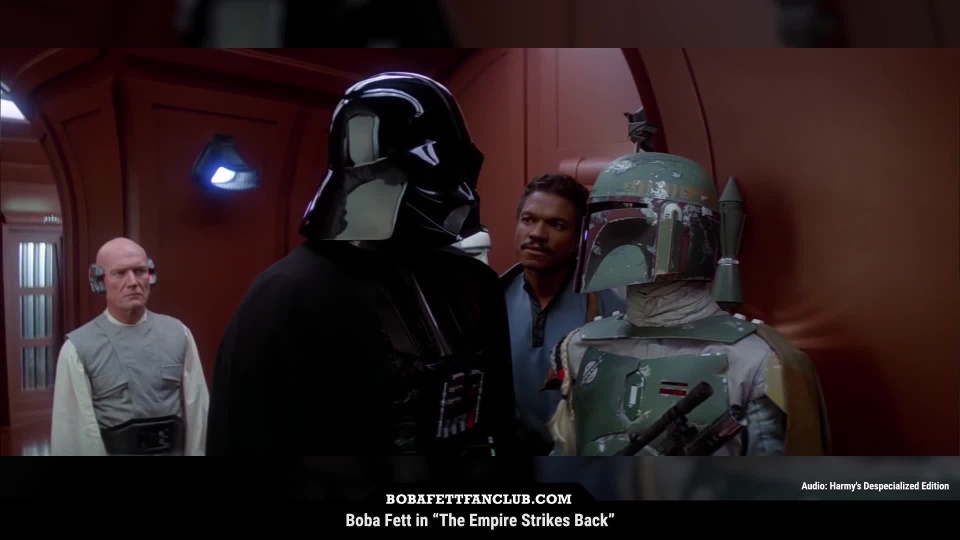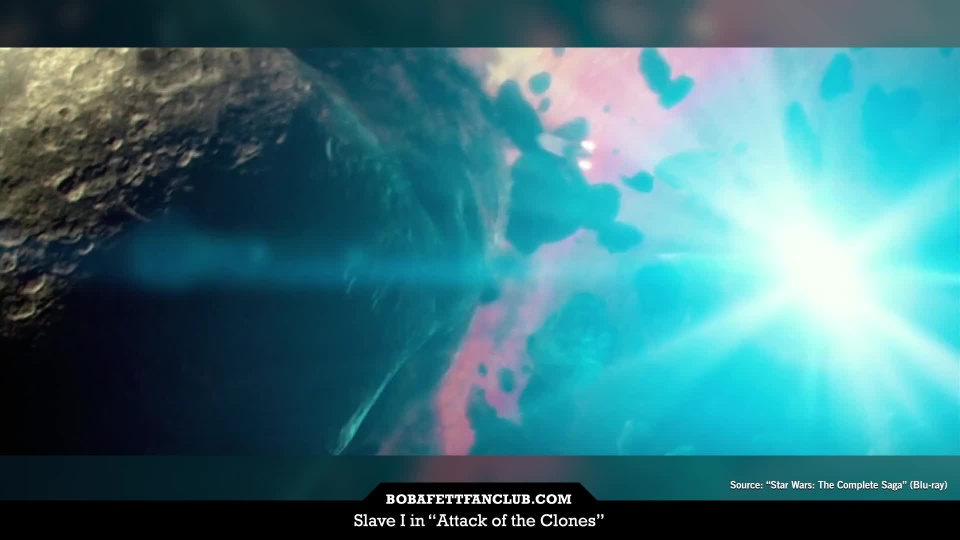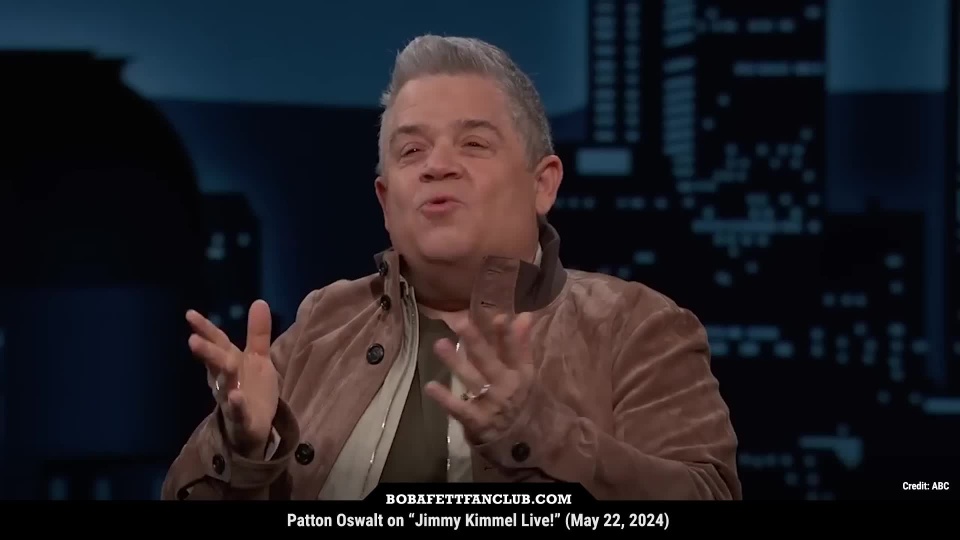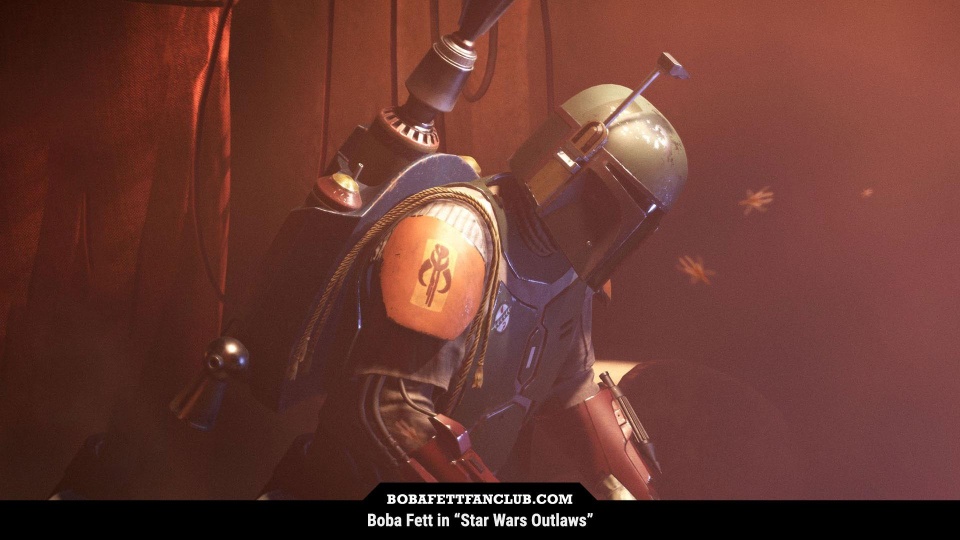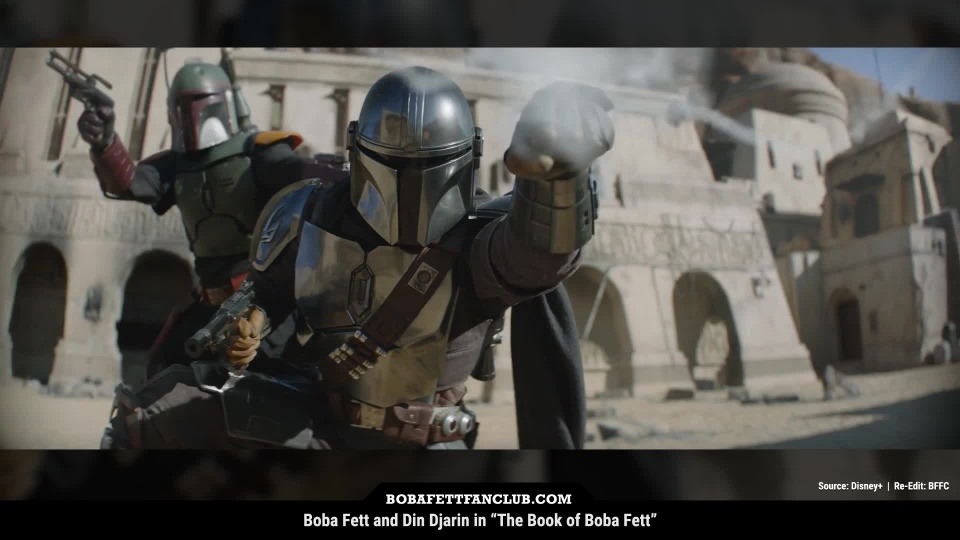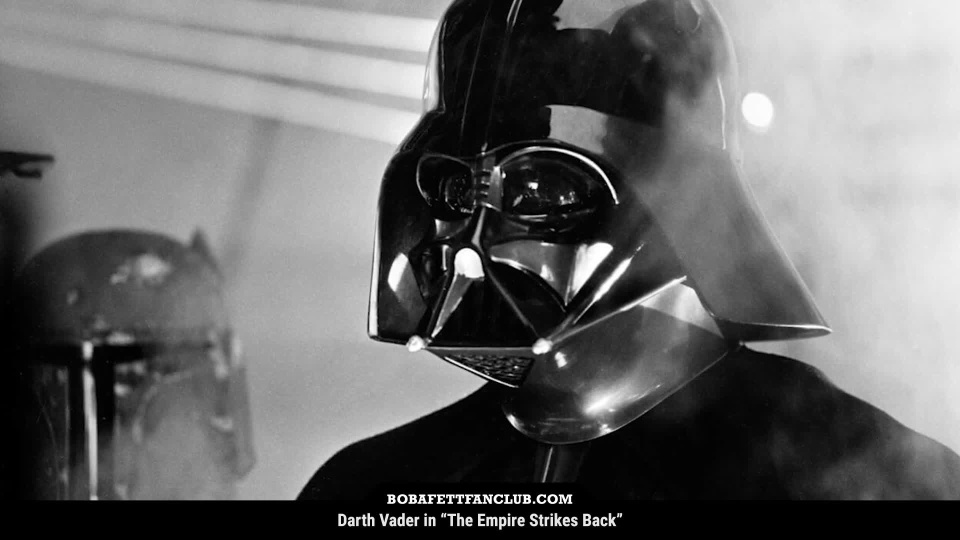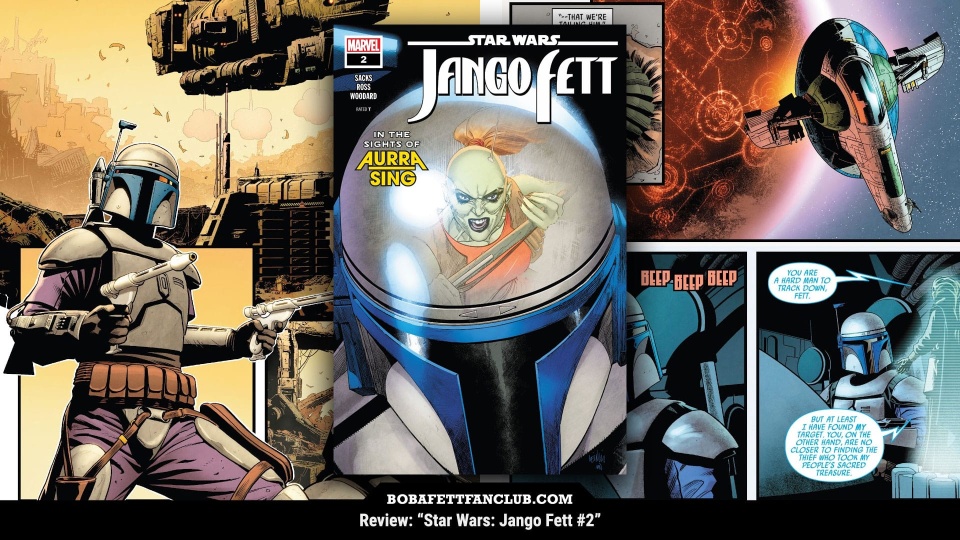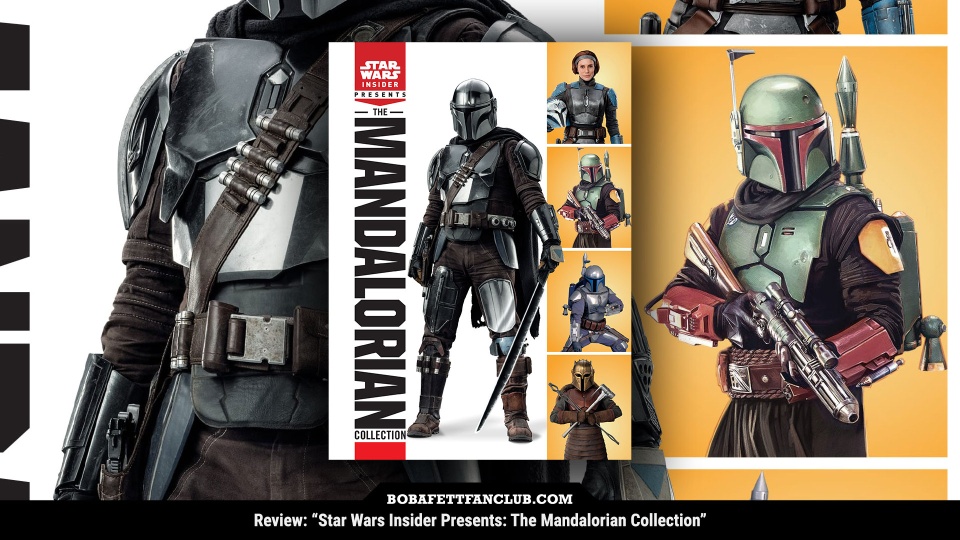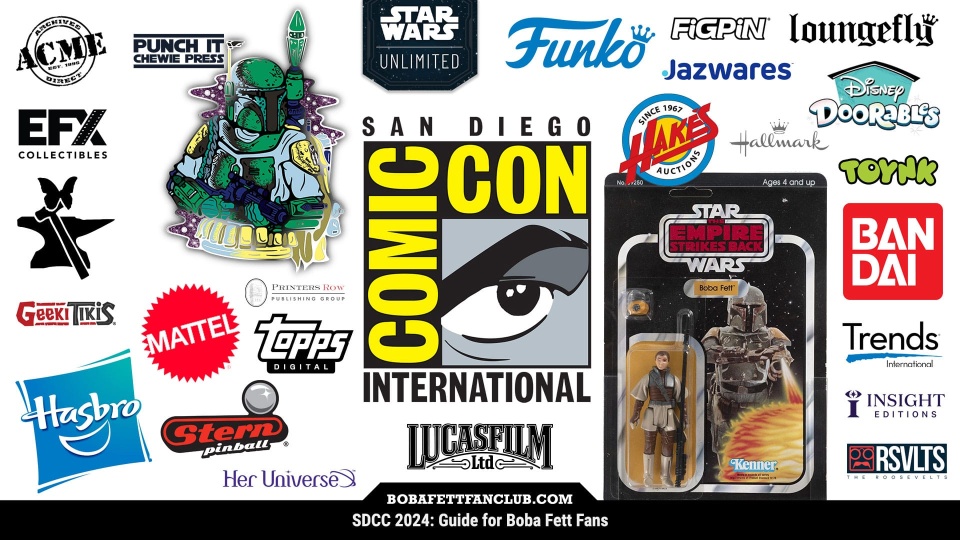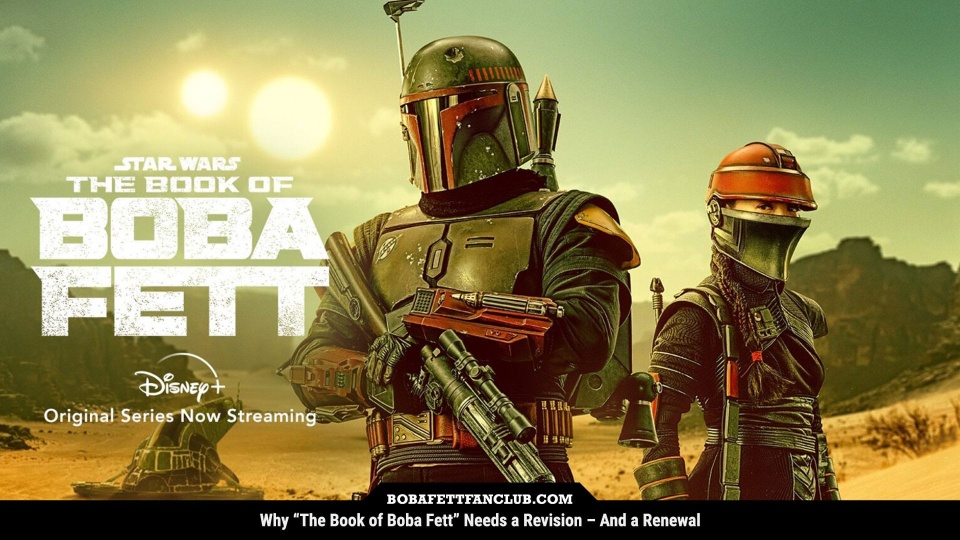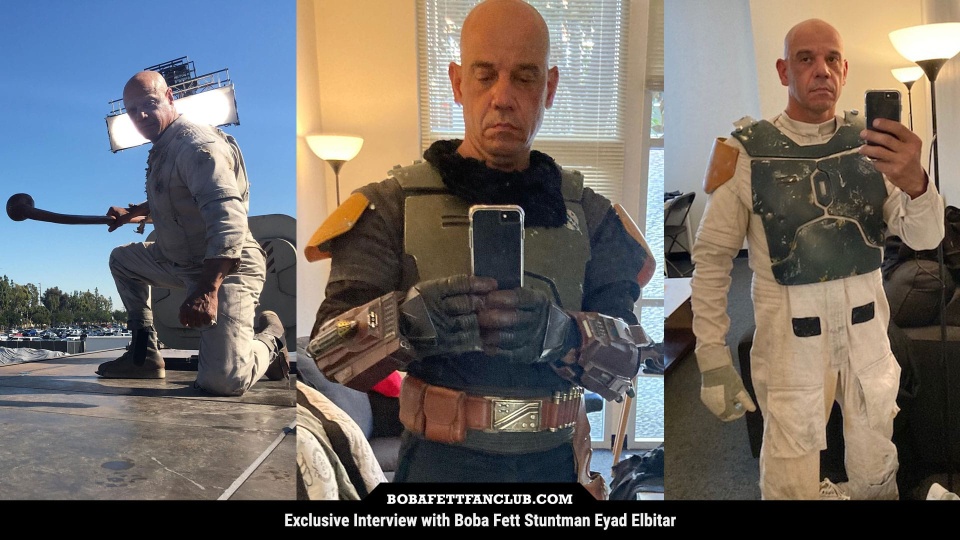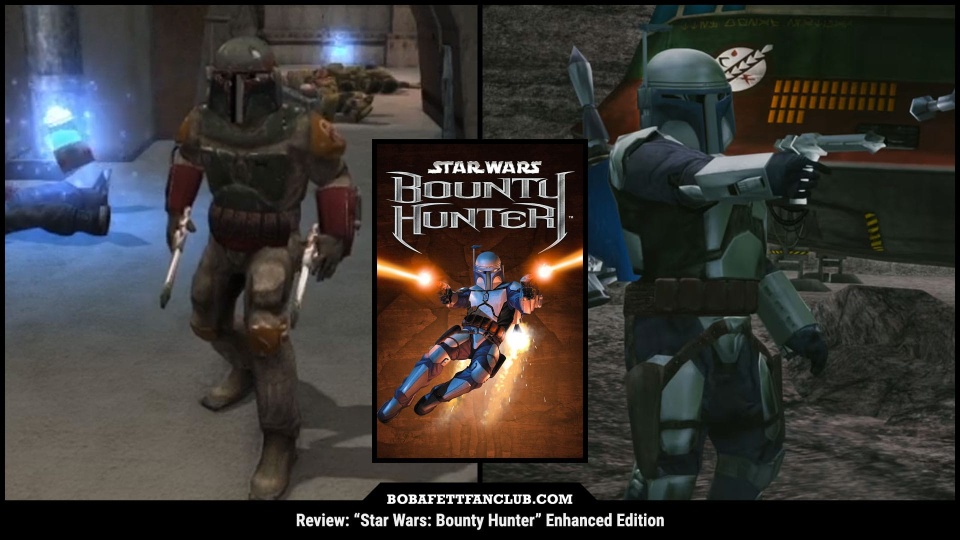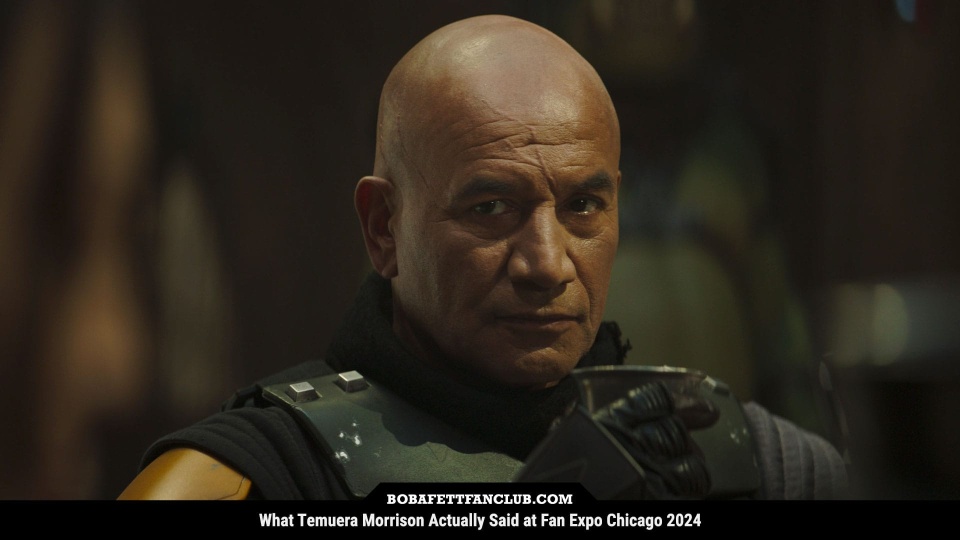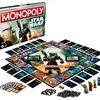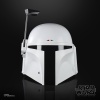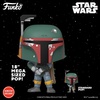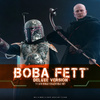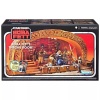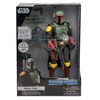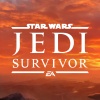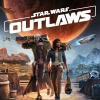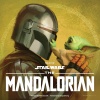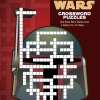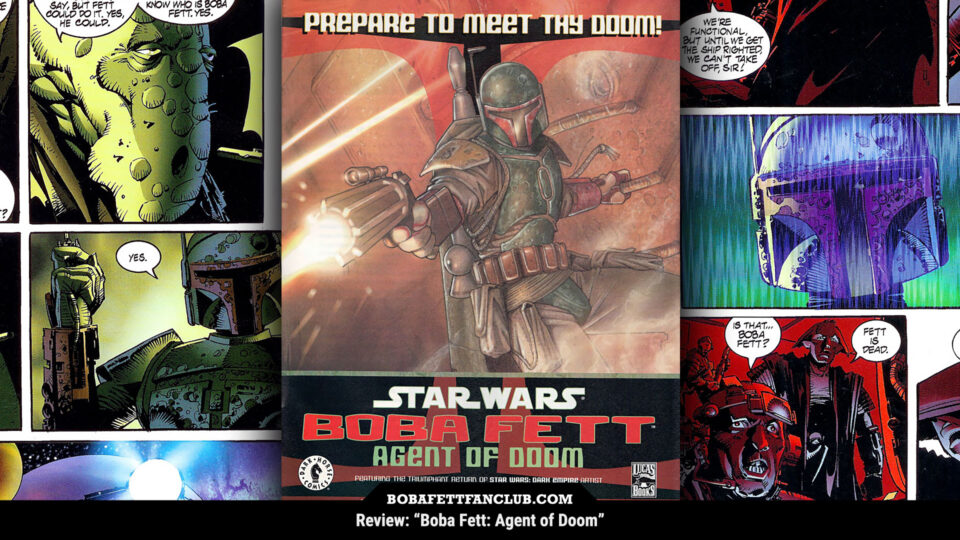
Review: "Boba Fett: Agent of Doom"
One of the most brutal stories within the Star Wars Legends continuity was Boba Fett: Agent of Doom, a truly savage one-shot comic released by Dark Horse in 2000. Written by John Ostrander, who is known for his work on Suicide Squad, and illustrated by Cam Kennedy, the comic showcased the atrocities committed by the Galactic Empire while also highlighting the depths that Boba Fett was willing to go to in order to cement his reputation as the galaxy’s greatest bounty hunter, making it an unmissable read.
The story begins around a decade after the Battle of Endor, with Fett meeting a member of the Gulmarid species named Slique Brighteyes in a seedy bar on a backwater Outer Rim world known as Basteel. Brighteyes explains that his species was driven to near-extinction by the Galactic Empire, who ransacked their homeworld of Gulma and massacred most of the inhabitants. The few surviving Gulmarids were then rounded up by Imperials and placed aboard a prison ship known as the Azgoghk, where they were subjected to horrific experiments by an Imperial scientist named Leonis Murthé. These events were depicted in flashbacks throughout the panels in which Brighteyes described them to Fett. And since Star Wars is generally viewed as a family-friendly franchise, Ostrander certainly deserves praise for showcasing the galaxy we all know and love in a far more sinister light. The writer was also clearly not afraid to highlight the atrocities committed by the Galactic Empire, making Agent of Doom a story which really does display the dangers of totalitarianism.
Brighteyes reveals that he wants Fett to kill Murthé and Mir Tork, the Imperial admiral who commands the Azgoghk, as revenge for what they did to his people. Although the Empire had already been defeated by the time Agent of Doom took place, Murthé and Tork still continued to commit atrocious actions onboard the Azgoghk while also evading justice from the New Republic, and it is clearly understandable that Brighteyes would want to see them brought to justice. However, since the Gulmarids are clearly not wealthy, Brighteyes admits that he can only offer Fett a paltry sum of one hundred Imperial Credits for the job. This initially enrages Fett, who presses his blaster against Brighteye’s head and warns him that he is not someone who takes lightly to being mocked. Seeing as Brighteyes clearly has nothing left to lose, the alien then calmly explains that Fett’s reputation has suffered greatly after his encounter with the Sarlacc and his numerous failed attempts to capture Han Solo. Brighteyes then goes on to explain that accepting and completing this highly dangerous new assignment, which nobody else dared to attempt, could repair some of the damage to Fett’s blemished reputation. After a pause, Fett then agreed to accept the assignment. This exchange of dialogue proved to be fascinating for various reasons. Firstly, it proved that Fett really does care about protecting his reputation at all costs, something we can all relate to on some level. Despite being a bounty hunter who operates in a galaxy far, far away, Boba Fett still cares about how he is viewed by other people, making him a surprisingly human and relatable character, regardless of the cold and merciless exterior he presents to the outside world. And while he clearly did not have enough money to make the job appeal to Fett, Brighteyes clearly knew that appealing to Fett’s pride and his aloof but very real sense of morality, would ensure that he accepted the assignment.
Secondly, the conversation also showcased Fett’s sense of morality. Although Fett was regularly employed by the Empire at the height of its power, he still clearly disagreed with many of the immoral actions committed by the Empire’s totalitarian regime, and his willingness to accept the assignment also proved that he wanted to punish Murthé and Tork for their immoral actions. Since Fett does not remove his helmet throughout Agent of Doom, his exact feelings as he paused before accepting the job are ultimately ambiguous, but Ostrander no doubt wanted to display Fett’s human side by depicting him mentally weighing the advantages and disadvantages of the assignment before he agreed to hunt down the two war criminals.
Murthé and Tork are shown to be two of the most despicable villains ever depicted in the Star Wars franchise, as they both enjoyed the pain and suffering they inflicted on others. Murthé even admits that he no longer pretends to be a scientist, and that he simply inflicts pain for the pleasure it gives him. We also saw the heinous Murthé gleefully blasting a restrained Gulmarid with a blaster, while copious amounts of blood littered the floor, and a severed Gulmarid head and internal organs were strewn across a nearby table. Tork also explains that he approves of these appalling actions as he approves of the Empire’s anti-human agenda, and that, regardless of the Emperor’s death, he believes that all non-humans should be cleansed from the galaxy. Ostander clearly did a great job of making readers hate these two Imperials, because after just a few panels, fans will no doubt be hoping that Fett kills them both. And the panels showing Murthé torturing his victims almost seemed like they belonged in an R-rated horror film as opposed to a story in the Star Wars galaxy, since Kennedy really did pull no punches when it came to depicting the gruesome and heinous actions the crazed individual committed. Agent of Doom is certainly one of the more mature Star Wars comics on the market, and with good reason. There was even a panel depicting a grinning Murthé with the blood of his victims splashed across his face, since his sadism clearly knew no bounds.
As soon as Fett accepted the job, we were treated to some spectacular action sequences. Fett initially used an Ion Cannon to disable the Azgoghk’s engines as it was about to land on the world of Malicar 3, causing it to violently crash-land. He then transmitted a message to the ship, where he stated that he simply wanted Murthé and Tork, and that the rest of the crew could either go free or die along with them. Fett is known for being a man of few words, and the merciless way in which he delivered the cold and straightforward message would certainly have sent a chill to all those onboard the ship.
The crew of the Azgoghk refused to surrender, resulting in a gun battle with Fett after he used his jetpack to board the ship through a side opening. Fett effortlessly gunned down most of the guards while avoiding being hit himself, since this story was clearly written before it was established that anyone wearing Mandalorian armor is essentially a superhuman who is invulnerable to damage. Most of the guards proved to be no match for Fett, and he left a trail of bodies in his wake as he marched across the ship.
Fett then freed the captive Gulmarids who were being held onboard the Azgoghk, but he refused to help them any further, explaining that they should take the weapons of the dead guards and fight their way to freedom if they wished to survive. Although Fett clearly values the lives of sentient beings, he still believes in self-autonomy, which explains why he told the few surviving Gulmarids to fight the remaining guards themselves instead of helping them any further after he freed them.
Agent of Doom was published in 2000, before it was revealed that Boba Fett’s fatherly figure, Jango Fett, was killed by Jedi Master Mace Windu. Therefore, Fett did not have much of a reason to hate the Jedi at the time the story was published, unless you count how his skirmish with Luke Skywalker above the Great Pit of Carkoon played a role in him being fed to the Sarlacc. Since his grudge against the Jedi Order had not yet been established, Fett actually shows some respect towards the Jedi throughout Agent of Doom, as he explains to Murthé that wielding a Jedi’s weapon does not make him a Jedi. Fett was clearly disgusted by the sight of the sadistic Imperial scientist pretending that he knew how to wield a lightsaber in combat, and Murthé’s pathetic threats while he brandished the weapon clearly did not intimidate Fett. Instead of ending Murthé’s life quickly, Fett instead set the Imperial officer alight with his flamethrower, and casually looked on as the burning Murthé begged the bounty hunter to end his life to relieve him of his suffering. Since Murthé literally admitted earlier in the story that he enjoys inflicting pain on others, the way in which he begged for a quick end after being set on far was certainly satisfying. Like most who take pleasure in harming others, Murthé clearly could not handle being on the receiving end when pain was finally inflicted upon him. And because Fett causally looks on as Murthé burns and begs for a quick end, it was clear that, while he often tries to keep his sense of morality hidden, the bounty hunter clearly felt that Murthé deserved to suffer as punishment for the atrocities he had committed. Although he certainly is no saint, Boba Fett clearly still possesses a strong sense of right and wrong, something which was highlighted throughout Agent of Doom.
Fett then encounters Tork, who proves to be more of a challenge than the squirming Murthé. Although Tork threatened to detonate the ship’s self-destruct sequence unless Fett surrendered, the cunning and devious Fett then wisely chose to taunt his prey by pretending to leave and saying that he would hunt him down later. This act of mockery intentionally engaged Tork, who furiously demanded that Fett turn and face him before being shot dead by the bounty hunter. A squirming and mortally injured Murthé then charged into the room, and Fett swiftly ended him with a shot from his wrist launcher.
Because of the grim and bleak tone of Agent of Doom, Kennedy’s artwork was never too bright or colorful, and the dingy colors on display served the book well. The interiors of the Azgoghk were shown to be dimly lit, with foreboding shadows and narrow corridors helping to create feelings of tension and claustrophobia as Fett prowled the ship. The scene where Fett encounters Tork was bathed with an aggressive red light, to highlight the murderous intent which both men had on their minds. And the portions of the comic taking place outside took place at night, with daylight never being present throughout the story. Kennedy also conveyed strong levels of detail throughout the comic, with the dents on Fett’s armour, the bloodstained floors in the torture chamber, and the malicious smirks on the faces of Murthé and Tork all being shown clearly and deliberately unpleasantly.
At the end of the story, Fett returns to Basteel to deliver a sack containing the severed heads of Murthé and Tork to a dying Brighteyes. We did not actually see Fett decapitating the corpses of the two Imperials, but the sight of blood dripping from the sack which he was carrying still proved to be something which will be burned into your memory for years to come. Fett also tells the Gulmarids who he liberated earlier to do whatever they need to do to survive, while also warning them not to forget his name. Although he performed an act of kindness by freeing them from their captors, Fett still has a reputation to uphold, and he has clearly had his fill of charitable acts by this point. Brighteyes is then shown lying on his bed, and while he appears to be dying, he still manages to express his gratitude by saying that he knew that Fett would complete the job, for the simple reason that he is Boba Fett. Although Brighteyes is on his deathbed and the survival of the Gulmarid species in doubt, the story still ends on a bittersweet note, with Fett fulfilling his duty and Brighteyes learning that his people have been avenged. And readers will still be satisfied to learn that Brighteyes and the rest of his dwindling species finally got to experience justice, with the sack containing their severed heads serving as a grim reminder that nobody escapes from Boba Fett.
Boba Fett: Agent of Doom simultaneously showcases the lengths that Fett is willing to go to protect his reputation, while also highlighting the hidden sense of morality he hides underneath his Mandalorian armor. Although it certainly was not the most cheerful or upbeat Star Wars story you will ever read, Agent of Doom still proved to be an unforgettably brutal and harrowing account of why Fett is the galaxy’s most feared bounty hunter. And its relentless depiction of the more vicious side of the Star Wars galaxy and the way in which it exhibits Fett’s determination to succeed at all costs made it into one of the best one-shot comics from the entire Legends catalogue.

